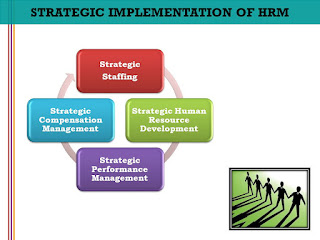Strategic human resource development is “the identification of essential job skills and the management of employees' learning for the long-range future in relation to explicit corporate and business strategies.” The last part is the most critical in this sentence—namely the linkage between development needs and activities to the organization's mission and strategy.
Employee development
The employee development is the process of enhancing an employee's future value to the enterprise through careful career planning. It means that management has to be willing to commit the financial resources to employee development programs, even if there is no short-term payoff.
| Developmental Strategies Three basic developmental strategies for organizations | ||
| Strategies | Definitions | Instruments/Programs |
| Cognitive | Being concerned with altering thoughts and ideas (knowledge, new processes). | Articles, lectures, videos, university courses, management seminars |
| Behavioral | Attempts to change behavior (e.g., management style). | Role-playing, behavior modelling, Leadership Grid, sensitivity training, outdoors, team building, mentoring |
| Environmental | Strategies to change attitudes and values. | Job rotation, organizational development, the learning organization concept, temporary assignments, employee exchange programs, matrix management, project team, internal consulting, cross-cultural management training |
Employee development is a long-term process that requires the same attention and concern as capital investment, because it is an investment in human capital.
The Learning Organization:
A concept put forward first by Chris Argyris, then popularized by Peter Senge. According to Senge, a learning organization is where “people continually expand their capacity to create the results they truly desire, where new and expansive patterns of thinking are nurtured, where collective aspiration is set free, and where people are continually learning how to learn together.” Senge contrasts what is done in North American organizations with the Japanese approach:
Case Study
In North America, the people who spend the most time learning about quality are those on the shop floor. They get the five-day course on statistical process control. Their bosses get the three-day course, and the CEO gets the two-hour briefing. In Japan, by contrast, it is exactly the opposite. This is very significant symbolically. There, the leaders are the learners.
Molson Breweries seems to be a model of a learning organization. In 1997, it opened the Molson Personal Learning and Development Centre in Etobicoke, Ontario. The objective was to help employees sharpen and broaden the skill sets needed for their jobs and beyond. As Lloyd Livingstone, brewing training specialist and coordinator for the development of the Learning Centre put it, “It really is a fun place; to look around and see these guys excited about learning, it really makes you feel excited too.”
Opinions.....
(1) According to In Molson Breweries;
employees are offered a combination of mandatory training and personal career development. Training methods include Personal Learning Maps (a competency-based learning plan for each employee), a database of courses sorted by skills, a platform for launching multimedia training, and an administration program that allows managers to track employee progress and add new skills and courses to the system. The system encourages interaction between employees and managers, and even senior executives participate.
(2) According to Senge, teams are vital
Because they, not individuals, are the fundamental learning unit in modern organizations. Unless the team can learn, the organization cannot learn. For human resource managers, this approach means delegating a higher responsibility for acquiring new expertise and skills to the managers and employees and, perhaps, providing guidance and counselling.








No comments:
Post a Comment